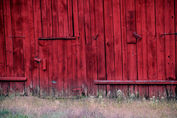ADAM LENZ
producer . curator . educator . artist
A Way of Providing Ventilation
drawing, audio, and video
A Way Of Providing Ventilation is a multidisciplinary project examining the history and architecture of the tobacco sheds in Windsor, Connecticut. The project is formed around a series of ten charcoal drawings, created by Adam Lenz while in residence at the Windsor Art Center. The drawings abstractly reflect on the landscape, architecture, and imagined airflow patterns of the regional tobacco sheds, and are intended to serve as graphic scores - documents that incorporate graphics as a means of conveying musical directions in lieu of standardized Western musical notation. The drawings were interpreted by multi-instrumentalist and improviser Zach Rowden, forming the basis of a multi-channel sound installation.
Exhibition | Windsor Art Center
Windsor, Connecticut
October 30 - November , 2020
Artist Residency | Windsor Art Center
Windsor, Connecticut
September 2020 - February 2021
Artist Conversation: Viewpoints | The Watermill Center
Water Mill, New York / Online
January 20, 2021
Performance: Swelter | La Bola Encuentro de Música y Arte
Mexico / Online
March 20, 2021
Performance: Swelter | SEAMUS 2022 | Western Michigan University
Kalamazoo, Michigan
April 2, 2022
Artist-in-Residence Interview with Adam Lenz,
Windsor Art Center, 2020

Top: Detail, charcoal drawing from A Way of Providing Ventilation,. Middle: Recording and installation images, A Way of Providing Ventilation at Windsor Art Center. Bottom: Charcoal drawings from A Way of Providing Ventilation. Images by Adam Lenz.
Viewepoints conversation between Adam Lenz and Zach Rowden,
The Watermill Center, 2021








































